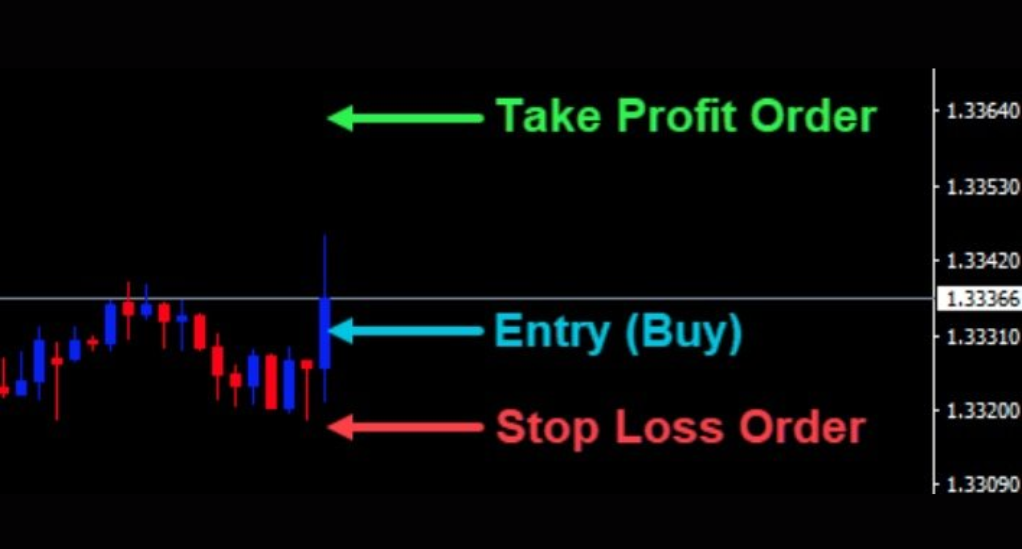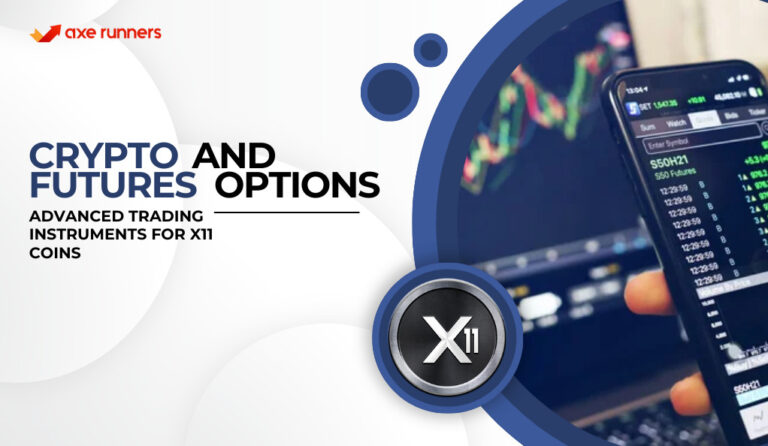The world of cryptocurrency trading is as exhilarating as it is unpredictable. With the potential for significant returns, it has attracted a vast number of traders, both seasoned and novices. However, the volatile nature of cryptocurrencies means that the risks are equally high. This is where the importance of risk management comes into play.
What is Cryptocurrency Trading?
Cryptocurrency trading involves buying and selling digital currencies like Bitcoin, Ethereum, and many others with the aim of making a profit. Unlike traditional stock markets, the cryptocurrency market operates 24/7, leading to rapid price changes within short time frames.

Why is Risk Management Crucial in Cryptocurrency Trading?
The decentralized nature of cryptocurrencies means that they are not regulated by any central authority. This, combined with the relatively young age of the crypto market, contributes to its volatility. Price swings of over 10% within a single day are not uncommon. Such volatility can lead to significant profits, but it can also result in substantial losses. Risk management strategies help traders set boundaries and make informed decisions to protect their investments.
Understanding Cryptocurrency Volatility
One of the defining characteristics of the cryptocurrency market is its volatility. But what causes these rapid and significant price fluctuations? And how can traders prepare themselves?
Factors Contributing to Cryptocurrency Volatility
- Market Sentiment: The crypto market is highly influenced by public perception. News, whether positive or negative, can lead to drastic price changes. For instance, endorsements from celebrities or negative regulatory news can respectively drive prices up or down in a matter of hours.
- Liquidity: Liquidity refers to how easily an asset can be bought or sold without causing a significant price change. Cryptocurrencies with lower trading volumes tend to be more volatile because even small trades can impact their prices significantly.
- Speculative Nature: Many traders in the crypto market are speculators, meaning they buy assets with the hope that they will increase in value. This speculative approach can lead to rapid price surges and equally rapid declines.
- Regulatory News: The decentralized nature of cryptocurrencies often puts them at odds with traditional financial systems. Any news or rumors regarding government regulations can introduce volatility. For example, news about a country banning or embracing cryptocurrency can lead to significant market movements.
- Technological Changes and Innovations: The crypto world is ever-evolving. New technological advancements, updates to blockchain protocols, or security breaches can influence prices.
Setting Up Stop-Loss and Take-Profit Orders
In the unpredictable world of cryptocurrency trading, stop-loss and take-profit orders are essential tools that can help traders protect their investments and lock in profits. These automated orders can be the difference between a successful trade and a significant loss.

What are Stop-Loss and Take-Profit Orders?
- Stop-Loss Order: This is an order placed with a broker to buy or sell a specific cryptocurrency once it reaches a certain price. It’s a tool used by traders to prevent large losses in volatile markets. If the cryptocurrency price drops to the stop-loss price, the order is executed, preventing further loss.
- Take-Profit Order: This order allows traders to set a specific price at which they would like to sell a cryptocurrency to lock in a profit. Once the cryptocurrency reaches this predetermined price, the take-profit order is executed.
Why are These Orders Important?
- Emotion-Free Trading: One of the biggest challenges traders face is managing their emotions. Fear of missing out (FOMO) or panic selling can lead to poor decisions. Automated orders like stop-loss and take-profit ensure that trades are executed based on strategy, not emotion.
- Protection Against Market Volatility: The crypto market can change rapidly. These orders ensure that traders can respond quickly to sudden market movements, even if they’re not actively monitoring their portfolio.
- Profit Maximization: Take-profit orders allow traders to lock in profits at optimal times, ensuring that they don’t miss out on potential gains due to sudden market downturns.
How to Set Up These Orders
- Determine Your Risk Tolerance: Before setting a stop-loss order, decide how much of a loss you’re willing to tolerate. This could be a fixed amount or a percentage of your investment.
- Analyze Market Conditions: Look at market trends, support and resistance levels, and other technical indicators to determine optimal prices for your orders.
- Choose the Right Platform: Not all trading platforms support these types of orders. Ensure your chosen platform allows for both stop-loss and take-profit orders.
- Regularly Review and Adjust: As market conditions change, it’s essential to revisit and adjust your orders accordingly.
Diversification in Cryptocurrency Portfolio
Diversification, a fundamental principle in traditional investment strategies, holds equal importance in the realm of cryptocurrency. By spreading investments across a range of assets, traders can mitigate risks and enhance the potential for returns.

Why Diversify?
- Risk Reduction: Not all cryptocurrencies move in tandem. While one might be experiencing a downturn, another could be on an upward trajectory. Diversifying ensures that the poor performance of one asset doesn’t severely impact the entire portfolio.
- Potential for Higher Returns: Diversification allows traders to capitalize on the growth of multiple assets. If one cryptocurrency surges in value, it can offset losses from others that might not be performing as well.
- Access to New Opportunities: The cryptocurrency world is vast, with new projects and tokens emerging regularly. Diversifying allows traders to tap into the potential of various projects.
Strategies for Selecting a Diversified Portfolio
- Research: Before investing, thoroughly research potential cryptocurrencies. Look into their use cases, technology, team, and market trends.
- Mix of Established and New Cryptocurrencies: Consider including a mix of well-established cryptocurrencies like Bitcoin and Ethereum with newer, promising tokens. This provides a balance between stability and potential high returns.
- Avoid Overdiversification: While diversifying is essential, having too many assets in a portfolio can be counterproductive. It can become challenging to monitor and manage a vast number of investments effectively.
- Regularly Rebalance: The value of cryptocurrencies can change rapidly. Regularly review and adjust your portfolio to ensure it aligns with your investment goals.
| Cryptocurrency | Percentage of Portfolio | Reason for Inclusion |
|---|---|---|
| Bitcoin (BTC) | 40% | Established, widely recognized, and acts as a market indicator |
| Ethereum (ETH) | 25% | Supports smart contracts, foundation for many decentralized applications |
| Binance Coin (BNB) | 10% | Native coin of Binance exchange, utility in various applications |
| Chainlink (LINK) | 10% | Connects smart contracts with real-world data |
| Polkadot (DOT) | 5% | Interoperability between blockchains |
| Cardano (ADA) | 5% | Focus on sustainability and scalability |
| New Promising Token | 5% | Potential for high returns, innovative use case |
Regularly Monitoring and Adjusting Your Portfolio
In the fast-paced world of cryptocurrency, staying updated and proactive is crucial. Regularly monitoring and adjusting your portfolio ensures that you remain aligned with your investment goals and can respond swiftly to market changes.
The Importance of Staying Updated
- Dynamic Market Conditions: Cryptocurrency prices can be influenced by a myriad of factors, from regulatory changes to technological advancements. Regular monitoring helps traders stay on top of these changes.
- Optimizing Returns: By keeping a close eye on market trends, traders can seize opportunities to buy low and sell high, optimizing their returns.
- Risk Management: Regular monitoring allows traders to identify potential risks early on and make necessary adjustments to their portfolio.
Tools and Platforms for Effective Portfolio Monitoring
- Cryptocurrency Exchanges: Platforms like Binance, Coinbase, and Kraken provide detailed analytics and real-time price tracking for various cryptocurrencies.
- Portfolio Management Apps: Apps like Blockfolio and Delta allow traders to track their entire portfolio in one place, offering insights into performance, trends, and potential areas of concern.
- News Aggregators: Websites like CoinDesk and CryptoSlate provide up-to-date news on the cryptocurrency world, ensuring traders are informed about significant events that could impact their investments.
Educating Yourself Continuously
In the ever-evolving landscape of cryptocurrency, continuous education is not just beneficial—it’s essential. The rapid pace of technological advancements, regulatory changes, and market dynamics necessitates that traders stay informed to make sound investment decisions.
Why Continuous Education Matters?
- Staying Ahead of the Curve: The cryptocurrency world is characterized by its rapid innovations. New blockchain technologies, consensus algorithms, and decentralized applications are being developed regularly. By staying educated, traders can identify promising opportunities early on.
- Avoiding Pitfalls: Scams, Ponzi schemes, and dubious projects are unfortunately prevalent in the crypto space. An informed trader can better discern legitimate opportunities from potential threats.
- Understanding Market Dynamics: The more a trader understands about the underlying technologies and principles of cryptocurrencies, the better equipped they are to interpret market trends and make informed decisions.
Resources for Crypto Education
- Online Courses: Platforms like Coursera, Udemy, and Khan Academy offer courses on blockchain technology, cryptocurrency trading, and related topics.
- Cryptocurrency Forums: Communities like BitcoinTalk and the cryptocurrency subreddit are hubs of discussion, debates, and news sharing. They’re invaluable for getting insights from other traders and enthusiasts.
- Books: There are numerous books on cryptocurrency, blockchain, and their implications. Titles like “Mastering Bitcoin” by Andreas M. Antonopoulos provide deep dives into the intricacies of the crypto world.
- Seminars and Conferences: Events like Consensus and Devcon bring together industry leaders, developers, and enthusiasts. They’re excellent opportunities for networking and learning about the latest developments.
- News Websites: As mentioned earlier, websites like CoinDesk, CryptoSlate, and The Block provide up-to-date news and analyses on the cryptocurrency world.
Staying Updated with Regulatory Changes
One of the significant aspects of cryptocurrency education is understanding the regulatory environment. Regulations can vary widely by country and have a direct impact on trading and investment strategies. Regularly checking updates from financial regulatory bodies and government announcements can provide clarity on the legal landscape.
Understanding the Psychological Aspects of Trading
Trading, especially in a volatile market like cryptocurrency, is not just a test of strategy and knowledge but also of psychological resilience. Emotions can play a significant role in trading decisions, often leading to impulsive actions that might not align with a trader’s best interests.
Common Psychological Traps for Traders
- Fear of Missing Out (FOMO): Witnessing a sudden surge in a cryptocurrency’s price can lead traders to buy impulsively, fearing they might miss out on potential profits. This often results in buying at a peak, which can be risky.
- Panic Selling: Conversely, a sharp decline in prices can induce panic, leading traders to sell their assets hastily to avoid further losses. Such decisions might prevent them from benefiting from potential future rebounds.
- Overconfidence: A few successful trades can lead to overconfidence, making traders believe they can consistently predict market movements. This can result in riskier bets and potential losses.
- Attachment to a Particular Asset: Sometimes, traders become emotionally attached to a specific cryptocurrency, holding onto it despite clear indicators suggesting they should sell.
- Herd Mentality: Often, traders might follow the majority’s actions, believing there’s safety in numbers. However, the majority isn’t always right, and such a strategy can lead to losses.
Strategies to Maintain a Clear Mindset During Trading
- Set Clear Goals: Before starting, define what you aim to achieve with your trading activities. Whether it’s a specific profit target or a learning experience, having clear goals can guide your decisions.
- Establish Boundaries: Set predetermined stop-loss and take-profit points. This ensures you stick to a plan and aren’t swayed by emotions.
- Take Breaks: Continuous trading can be mentally exhausting. Taking regular breaks can help refresh your mind, allowing you to approach decisions with a clearer perspective.
- Stay Informed: Knowledge is a powerful tool against fear and uncertainty. The more you understand the market, the more confident and rational your decisions will be.
- Seek Support: Engage with a community or a group of fellow traders. Sharing experiences, discussing strategies, and getting feedback can provide valuable insights and emotional support.
Conclusion
Cryptocurrency trading offers immense potential for returns, but it’s accompanied by equally significant risks due to its volatile nature. Understanding market volatility, utilizing essential trading tools, diversifying investments, and continuously monitoring and adjusting one’s portfolio are crucial steps in navigating this dynamic landscape. Equally vital is the commitment to continuous education and the cultivation of a resilient mindset. As the crypto market continues to evolve, traders equipped with knowledge, strategy, and a balanced psychological approach will be best poised to thrive and achieve their investment goals.
At axerunners.com, our goal is to furnish well-rounded and trustworthy information regarding cryptocurrency, finance, trading, and stocks. Nonetheless, we avoid providing financial advice and instead encourage users to conduct their own research and meticulous verification.
Read More












